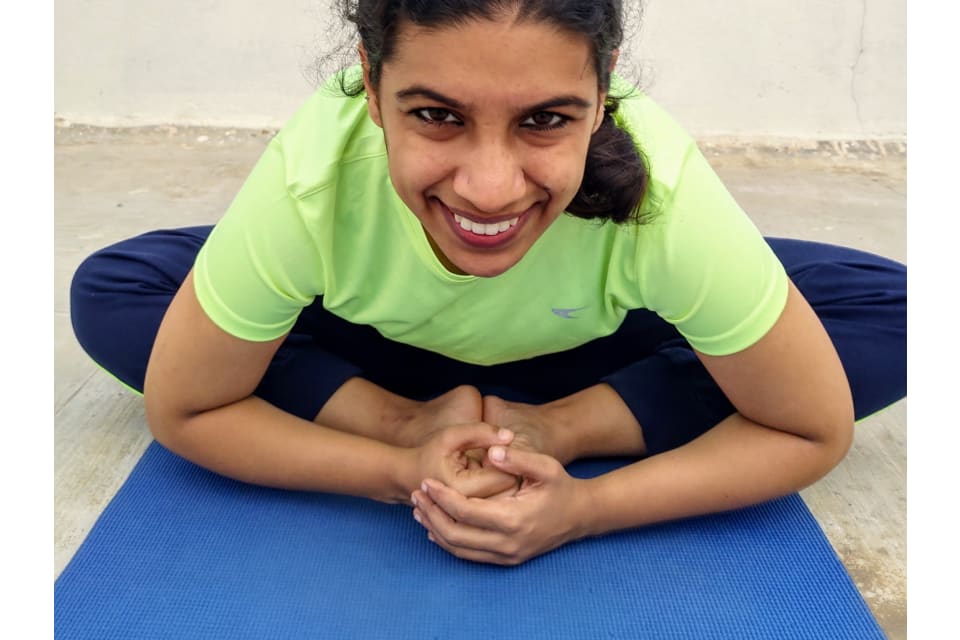Lawyer turned Yogi

It was the year 2006 when I passed the 12th grade and chose to study law (a regular professional course), as expected from a girl who is from a middle class family in India. An added advantage was that I got into one of the top five law universities in the country, followed by a handsomely paid legal job in the country's top bank. Like everybody else, I was running the rat race shifting to better paying and more demanding jobs. Following an epiphany experienced in late 2016, I took a sabbatical from work for 2 months after being burnt out from corporate life and set off to Rishikesh for a yoga course without any expectations (I had never done yoga before only heard about it).
The experience in Rishikesh completely transformed me as a person. The course in Rishikesh was quite demanding starting at 5 A.M. in the morning and ending with a meditation session at 7 P.M. in the evening. The course in Rishikesh was affiliated to Yoga Alliance organization in the US. We were taught Hatha Yoga, Ashtanga Yoga, philosophy of Yoga, physiotherapy, Pranayama, history of Yoga, guided meditation techniques as subjects. However, I realized that it was the little things like discipline, family, diet, environment, not talking while eating (basically our ancient Hindu tradition), etc. that mattered the most in life. It was because of these things that I was transformed as a person, as these very basic things were missing in my life because of the hectic corporate job.
Online Yoga Classes – Live & Interactive
Get 2 free private yoga sessions and 2 weeks of unlimited group classes with authentic yoga teachers. No credit card required when you sign up today!
I came back from Rishikesh to Bangalore in January 2017 and worked for a whole year as a lawyer with yoga completely missing from my life due to time constraint. However, I was not happy as my mind kept taking me back to those blissful months in Rishikesh and to explore more in the field of Yoga. As I knew that the course in Rishikesh was just a tip of the iceberg. Moreover, the course in Rishikesh catered to modern day Yoga and not the traditional Yoga. I quit my job in 2017 and did 3 courses in different types of Yoga, the course in Nashik was a traditional Hatha yoga, the course in Kerala was based on Ashtanga yoga of Patabhi Jois and lastly, the one in Dharamshala was mainly on Iyengar yoga. However, I was still not satisfied with just these month long courses. I finally applied to a yearlong Post graduate diploma course in Kaivalyadham Yoga Institute. I also wanted to stay in a typical ashram like setting and experience Yoga. The yearlong course finally prepared me to face the fact that Yoga has to be a lifestyle or the way of life to get benefits from it and it is during this course that I realized that I should share with people my knowledge and decided to take it up as a career. Briefly, we were taught traditional Hatha Yoga asanas, Pranayama, guided meditation techniques, theory subjects Hatha Yoga Pradipika, Gherand Samhita, Patanjali Yoga Sutras, yoga and mental health, to name a few. Never thought Yoga as a subject had so much theory. I am pursuing my masters in yoga through distance education trying to get deeper knowledge of the theory which will aid my practical teaching as well.
Unfortunately, I met with an accident last year and had to quit Yoga for a few months. I have completely recovered now and thus ready to share my knowledge of yoga with people. I am raring to go. I could come out of these tough times (surgery and recovery) only because of Yoga (asana, pranayama and meditation).
As stated previously, following an epiphany experienced in late 2016 to find peace and spirituality, I found my true calling in Yoga, I want to share this knowledge with as many people as possible so that they can benefit from it as I have. Yoga has made me realize that I am a simple person at heart. My dream is to lead a simple life with my family filled with peace (as happiness follows peace).
Online Yoga Classes – Live & Interactive
Get 2 free private yoga sessions and 2 weeks of unlimited group classes with authentic yoga teachers. No credit card required when you sign up today!
Share this post?
Interesting Articles
Celebrate the International Yoga Day 2023 With MyYogaTeacher - FREE Sessions for All!
Another exciting annual celebration is coming! The MyYogaTeacher team has prepared 4 days of really beautiful classes – free to you – in honor of Inte...
Continue ReadingThe Benefits of Yoga for Children with Scoliosis
Yoga is an ancient practice that offers numerous benefits for individuals of all ages and abilities. For children with scoliosis, a condition that cau...
Continue Reading11 Yoga Poses To Reduce Inflammation
When your muscles ache, or if you’re suffering from chronic pain, lowering the inflammation in your body makes perfect sense. But did you know that ke...
Continue ReadingRecent Articles
Neck and Shoulder Yoga for Pain Relief : New 1-on-1 Series!
Announcing A New 1-on-1 Series! We’re offering a new series of 1-on-1 classes! Our Neck and Shoulder Yoga for Pain Relief is designed to hel...
Continue ReadingOur New And Improved Group Class Platform!
Here's a quick walkthrough of our new GC interfaceExciting news! Our platform got an upgrade!MyYogaTeacher is always evolvi...
Continue ReadingNew 1-on-1 Hip Opening Series: Unlock Freedom in Movement
The new transformative 1-on-1 Hip Opening Series, specially designed to release tension and boost strength and mobility in your hips, is the perfect w...
Continue Reading© Copyright 2020 MyYogaTeacher Inc

